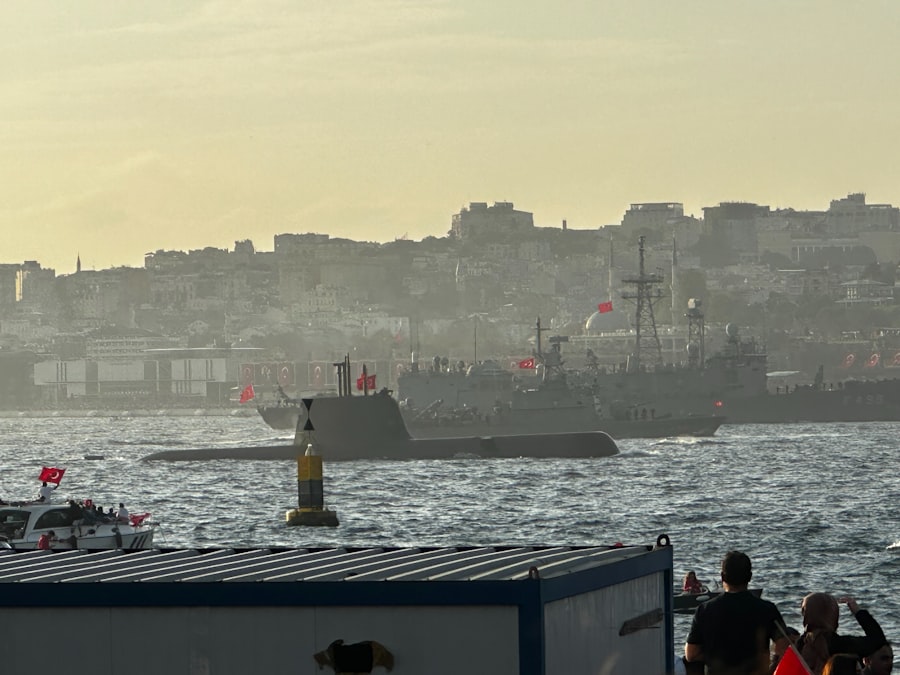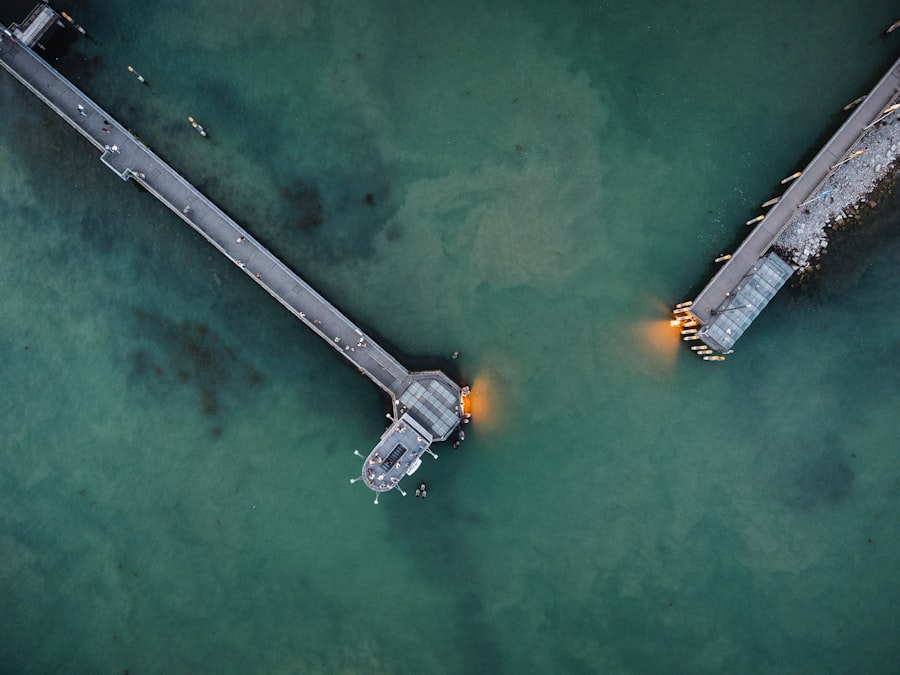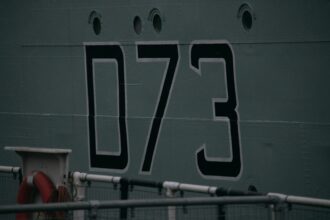The Cold War, a period marked by geopolitical tension between the United States and the Soviet Union, saw a significant escalation in military capabilities, particularly in naval warfare. Central to this arms race was the development and deployment of submarines, which became a crucial element in the strategic arsenals of both superpowers. The underwater domain offered a unique battleground where stealth and surprise could dictate the outcomes of potential conflicts.
As both nations sought to assert their dominance, submarines evolved from conventional vessels into sophisticated platforms capable of delivering nuclear weapons, fundamentally altering the nature of warfare. The submarine arms race was not merely a contest of technological prowess; it was also a psychological game. The ability to launch a nuclear strike from beneath the waves created a sense of security through deterrence, as both sides recognized that an attack on one would likely lead to catastrophic retaliation.
This dynamic fostered an environment of paranoia and mistrust, where each side constantly sought to outdo the other in terms of capabilities and reach. The Cold War submarine arms race thus became emblematic of the broader ideological struggle, reflecting the intense rivalry that defined international relations during this tumultuous era.
Key Takeaways
- The Cold War submarine arms race was a pivotal aspect of the broader conflict between the United States and the Soviet Union.
- Submarines played a crucial role in the Cold War, serving as a deterrent and a means of strategic defense for both superpowers.
- The development of submarine technology during the Cold War saw significant advancements in stealth, propulsion, and weaponry.
- The nuclear submarine race between the United States and the Soviet Union led to the deployment of increasingly sophisticated and powerful submarines.
- Submarine warfare was strategically important during the Cold War, as it provided both sides with the ability to project power and influence global politics.
The Role of Submarines in the Cold War
Submarines played a pivotal role in the military strategies of both the United States and the Soviet Union throughout the Cold War. Initially, these vessels were primarily used for reconnaissance and anti-submarine warfare, but as tensions escalated, their roles expanded dramatically. The introduction of nuclear-powered submarines allowed for extended missions and greater operational flexibility, enabling them to operate undetected for longer periods.
This capability transformed submarines into formidable platforms for launching nuclear strikes, thereby enhancing their strategic importance. Moreover, submarines served as a deterrent against potential attacks. The concept of Mutually Assured Destruction (MAD) hinged on the ability of both superpowers to retaliate with devastating force, even after suffering a first strike.
Submarines, particularly ballistic missile submarines (SSBNs), became essential components of this strategy. Their stealthy nature meant that they could remain hidden in the vast oceans, ready to respond to any aggression. This undersea presence not only provided a sense of security for both nations but also contributed to the overall stability of the international order during a time when direct confrontation was avoided at all costs.
Development of Submarine Technology during the Cold War

The Cold War spurred remarkable advancements in submarine technology, driven by the urgent need for both superpowers to maintain an edge over one another. The transition from diesel-electric submarines to nuclear-powered vessels marked a significant turning point in naval warfare. Nuclear propulsion allowed submarines to operate at greater depths and speeds, while also eliminating the need for frequent refueling.
This technological leap enabled submarines to undertake longer missions without surfacing, enhancing their stealth capabilities and making them more difficult to detect. In addition to propulsion advancements, the development of advanced sonar systems and missile technology further revolutionized submarine operations. The introduction of sophisticated sonar arrays allowed submarines to detect enemy vessels from greater distances, while advancements in missile technology enabled them to carry and launch nuclear warheads with unprecedented accuracy.
These innovations not only increased the lethality of submarines but also expanded their operational roles, allowing them to engage in both offensive and defensive missions effectively.
The Nuclear Submarine Race between the United States and the Soviet Union
| Aspect | United States | Soviet Union |
|---|---|---|
| First Nuclear Submarine | USS Nautilus (1954) | Lenin (1958) |
| Number of Nuclear Submarines | Over 70 | Over 60 |
| Longest Submarine | Ohio-class (560 ft) | Typhoon-class (574 ft) |
| Maximum Submarine Speed | 35 knots | 33 knots |
| Submarine-Launched Ballistic Missiles | Trident II (D5) | R-29RMU Sineva |
The nuclear submarine race between the United States and the Soviet Union epitomized the broader arms race that characterized the Cold War. The United States launched its first nuclear-powered submarine, USS Nautilus, in 1954, setting a precedent that would be followed by other nations. The Soviet Union quickly responded by developing its own fleet of nuclear submarines, leading to an intense competition for supremacy beneath the waves.
Each side sought to build more advanced vessels capable of carrying larger payloads and operating more stealthily than their adversaries. This race was not merely about quantity; it was also about quality and technological superiority. Both nations invested heavily in research and development, striving to create submarines that could evade detection while delivering devastating strikes.
The introduction of submarine-launched ballistic missiles (SLBMs) further escalated this competition, as each superpower sought to enhance its second-strike capability. The result was a continuous cycle of innovation and counter-innovation, with each side attempting to outpace the other in an ever-evolving technological landscape.
The Strategic Importance of Submarine Warfare during the Cold War
Submarine warfare emerged as a cornerstone of military strategy during the Cold War, reflecting its strategic importance in maintaining national security. The ability to launch nuclear weapons from underwater platforms provided both superpowers with a credible deterrent against potential attacks. This capability was particularly vital given the destructive power of nuclear weapons and the catastrophic consequences that would follow any direct confrontation between the two nations.
Furthermore, submarines played a crucial role in intelligence gathering and surveillance operations. Their stealthy nature allowed them to operate close to enemy shores without detection, providing valuable information about naval movements and capabilities. This intelligence was essential for informing military strategies and ensuring preparedness in an increasingly volatile geopolitical landscape.
As such, submarines became indispensable tools for both deterrence and intelligence operations, shaping the strategic calculus of both superpowers throughout the Cold War.
The Silent Battle Below: Submarine Operations and Tactics

The operations and tactics employed by submarines during the Cold War were characterized by secrecy and stealth.
The use of advanced sonar technology allowed submarines to navigate through complex underwater environments while avoiding enemy detection.
This silent battle below the surface was marked by intricate maneuvers and strategic positioning aimed at gaining an advantage over adversaries. Submarines engaged in various tactics, including stalking enemy vessels and conducting covert reconnaissance missions. The ability to remain undetected while gathering intelligence or preparing for a potential strike was paramount.
Additionally, submarines often operated in concert with other naval assets, creating a multi-layered defense that complicated enemy targeting efforts. This collaborative approach underscored the importance of submarines within broader naval strategies, as they complemented surface fleets and air power in achieving operational objectives.
The Cuban Missile Crisis and the Role of Submarines
The Cuban Missile Crisis of 1962 marked a critical juncture in Cold War history, highlighting the pivotal role that submarines played during this tense standoff between the United States and the Soviet Union. As tensions escalated over Soviet missile installations in Cuba, both sides prepared for potential military action. Submarines became key assets in this high-stakes confrontation, with each superpower deploying their fleets to assert control over strategic waterways.
During this crisis, U.
Navy submarines were tasked with monitoring Soviet naval movements while also serving as a deterrent against any aggressive actions. The presence of American submarines near Cuba underscored the seriousness of U.S.
intentions and provided a credible threat should hostilities erupt. Conversely, Soviet submarines were also deployed in response, creating a precarious situation where miscalculations could have led to catastrophic consequences. The Cuban Missile Crisis ultimately demonstrated how submarine capabilities could influence geopolitical dynamics and shape decision-making during moments of crisis.
The Impact of the Cold War Submarine Arms Race on Global Politics
The Cold War submarine arms race had far-reaching implications for global politics beyond just military strategy. It contributed to an atmosphere of fear and suspicion that permeated international relations during this period. Nations around the world closely monitored developments in submarine technology, recognizing that advancements by one superpower could shift the balance of power globally.
This dynamic fueled arms races not only between superpowers but also among smaller nations seeking to enhance their own military capabilities. Moreover, the submarine arms race influenced diplomatic negotiations and treaties aimed at curbing nuclear proliferation. Efforts such as the Strategic Arms Limitation Talks (SALT) sought to address concerns over escalating arms competition by establishing limits on nuclear arsenals and delivery systems, including submarines.
These negotiations reflected an acknowledgment that unchecked military advancements could lead to catastrophic consequences for humanity as a whole. Thus, while submarines served as instruments of deterrence during the Cold War, they also played a role in shaping diplomatic efforts aimed at promoting stability and reducing tensions.
The Legacy of the Cold War Submarine Arms Race
The legacy of the Cold War submarine arms race continues to resonate in contemporary military strategies and international relations. The technological advancements achieved during this period laid the groundwork for modern submarine capabilities, influencing naval warfare well into the 21st century. Nations today continue to invest heavily in submarine technology, recognizing its strategic importance in maintaining national security amidst evolving threats.
Furthermore, lessons learned from the Cold War submarine arms race inform current discussions on arms control and non-proliferation efforts. The experiences of both superpowers during this era highlight the dangers associated with unchecked military competition and underscore the importance of diplomatic engagement in addressing security concerns. As nations navigate complex geopolitical landscapes today, understanding the historical context of submarine warfare remains crucial for fostering stability and preventing future conflicts.
The Evolution of Submarine Technology after the Cold War
Following the end of the Cold War, submarine technology underwent significant evolution as nations adapted to new security challenges and technological advancements. The focus shifted from purely nuclear deterrence towards multi-role capabilities that included anti-piracy operations, intelligence gathering, and special operations support. Modern submarines are now equipped with advanced sensors and communication systems that enhance their operational effectiveness across diverse mission profiles.
Additionally, advancements in unmanned underwater vehicles (UUVs) have transformed how navies conduct underwater operations. These technologies allow for greater flexibility in surveillance and reconnaissance missions while minimizing risks to human life. As nations continue to explore new frontiers in underwater warfare, including cyber capabilities and artificial intelligence integration, it is clear that submarine technology will remain at the forefront of naval strategy well into the future.
Lessons Learned from the Cold War Submarine Arms Race
The Cold War submarine arms race offers valuable lessons for contemporary policymakers navigating complex security environments today. It underscores the importance of maintaining robust deterrent capabilities while also recognizing that unchecked military competition can lead to catastrophic consequences for global stability. Diplomatic engagement remains essential in addressing security concerns arising from advancements in military technology.
Moreover, understanding historical precedents can inform current discussions on arms control and non-proliferation efforts aimed at preventing future conflicts driven by military competition. As nations continue to grapple with evolving threats in an increasingly interconnected world, reflecting on the lessons learned from this pivotal period can help foster cooperation and promote peace among nations navigating similar challenges today.
The Cold War era was marked by an intense submarine arms race between the United States and the Soviet Union, as both superpowers sought to gain underwater supremacy. This period saw the development of advanced submarine technologies and strategies that significantly influenced naval warfare. For a deeper understanding of the strategic maneuvers and technological advancements during this time, you can explore a related article on the topic by visiting In The War Room. This resource provides valuable insights into the geopolitical tensions and military innovations that defined the submarine arms race of the Cold War.
WATCH THIS! America’s Nuclear Navy Was Born From Espionage
FAQs
What was the Cold War submarine arms race?
The Cold War submarine arms race was a competition between the United States and the Soviet Union to develop and deploy advanced submarine technology and weaponry during the Cold War era, from the late 1940s to the early 1990s.
What were the main objectives of the Cold War submarine arms race?
The main objectives of the Cold War submarine arms race were to gain strategic advantage by developing and deploying nuclear-powered submarines armed with ballistic missiles capable of delivering nuclear warheads, as well as to establish dominance in the underwater warfare domain.
What were the key technological advancements in the Cold War submarine arms race?
Key technological advancements in the Cold War submarine arms race included the development of nuclear-powered submarines, advanced sonar and detection systems, improved missile guidance and targeting systems, and the ability to launch ballistic missiles from underwater.
How did the Cold War submarine arms race impact international relations?
The Cold War submarine arms race contributed to heightened tensions between the United States and the Soviet Union, leading to a state of mutual deterrence known as “MAD” (Mutually Assured Destruction). It also influenced arms control negotiations and agreements, such as the Strategic Arms Limitation Talks (SALT) and the Treaty on the Non-Proliferation of Nuclear Weapons (NPT).
What were the long-term implications of the Cold War submarine arms race?
The long-term implications of the Cold War submarine arms race included the establishment of a stable but tense balance of power between the United States and the Soviet Union, as well as the continued development and deployment of advanced submarine technology by other nuclear-armed states. The legacy of the arms race continues to influence global security dynamics.




